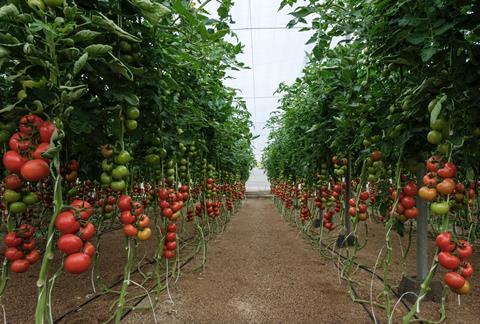The company examined current labelling inconsistencies for ToBRFV resistance claims and offered practical guidance on evaluating resistance when choosing varieties, as growers navigate dozens of companies claiming various levels of protection

Syngenta has moved to clarify how how high resistance (HR) and intermediate resistance (IR) levels are scientifically defined, in the face of the ongoing battle against Tomato Brown Rugose Fruit Virus (ToBRFV).
In a statement, the company examined the current lack of standardised legal criteria for these resistance labels across the industry, explored what these labelling inconsistencies mean for grower decision making and variety selection, and offered practical guidance on how to effectively evaluate resistance claims when choosing varieties.
”For the past decade, tomato growers have been fighting against Tomato Brown Rugose Fruit Virus (ToBRFV),” Syngenta noted.
”In 2020, resistant varieties hit the market, starting with varieties from Syngenta Vegetable Seeds.
”But five years later, how do growers navigate the dozens of companies that claim various levels of resistance to find one that works and helps them achieve their goals?” the group asked.
First, Syngenta outlined the difference between high resistance and intermediate resistance.
”There’s no legal standard for what level of control means high or intermediate resistance – no regulatory guidance, zero,” it said.
”The International Seed Federation (ISF) has issued guidelines as to the different levels of resistance.
”Given the lack of exact metrics for high or intermediate resistance, companies can claim high or intermediate resistance using any standard – and our internal research proves not everyone has the same standards (or follow ISF guidelines adequately).”
No ‘silver bullet’
Syngenta said that there is no proverbial ‘silver bullet’ – no genetics, spray, or management method that is perfect and will completely stop the infestation of ToBRFV.
With pressure there’s symptoms, because no one is selling total immunity, the company said.
“We took a conservative approach and consider our first trait intermediate resistance to heavy ToBRFV infestation,” said Norm Sissons, solanaceae crops strategy head.
“That doesn’t mean it’s less effective, our surveys with customers and internal performance data results show competitive and effective resistance compared to competitors that claim high resistance.”
The group explained that while it tests varieties in real-world conditions, the real world isn’t perfect, and growers all have different levels of pressure and management styles.
What might be high resistance for one grower, might only show intermediate protection for another, it pointed out.
Syngenta has some growers who work in high-tech greenhouses with all of the latest technologies, while it also works with other growers who use greenhouses that don’t have all of the controls and tools – meaning the needs and demands for the trait are different.
“We’re committed to continuing to support and develop additional traits with durable resistance to ToBRFV in current and future tomatoes,” Sissons explained. “All while maintaining high yield potential, superior fruit quality and taste, and long shelf life.”
Research study
Throughout the first half of 2025, the company’s researchers conducted a study comparing non-resistant checks to commercial varieties with its current ToBRFV resistance trait, upcoming varieties with two resistance sources, and with competitors’ varieties that claim intermediate or high resistance.
The study was set up with artificial inoculation on the second true leaves (mechanical inoculation) 35 days after sowing (the day following plantation), in a dedicated, contained greenhouse.
Evaluations were made three months after initial inoculation, scoring plants on a one to nine scale to examine individual plant symptoms on fruits and canopy in most cases.
It found that Syngenta’s initial trait provides ”competitive fruit protection” when compared with HR designated competitors, with environment and genetic background playing a strong role in how effective resistance is in tomatoes.
Combining multiple resistance traits shows stronger control than single traits alone and improved additional leaf protection, it found, with competitors showing stronger protection on the leaves compared to Syngenta’s initial trait, but showing no significant difference on the fruits compared to Syngenta varieties available in the test.



